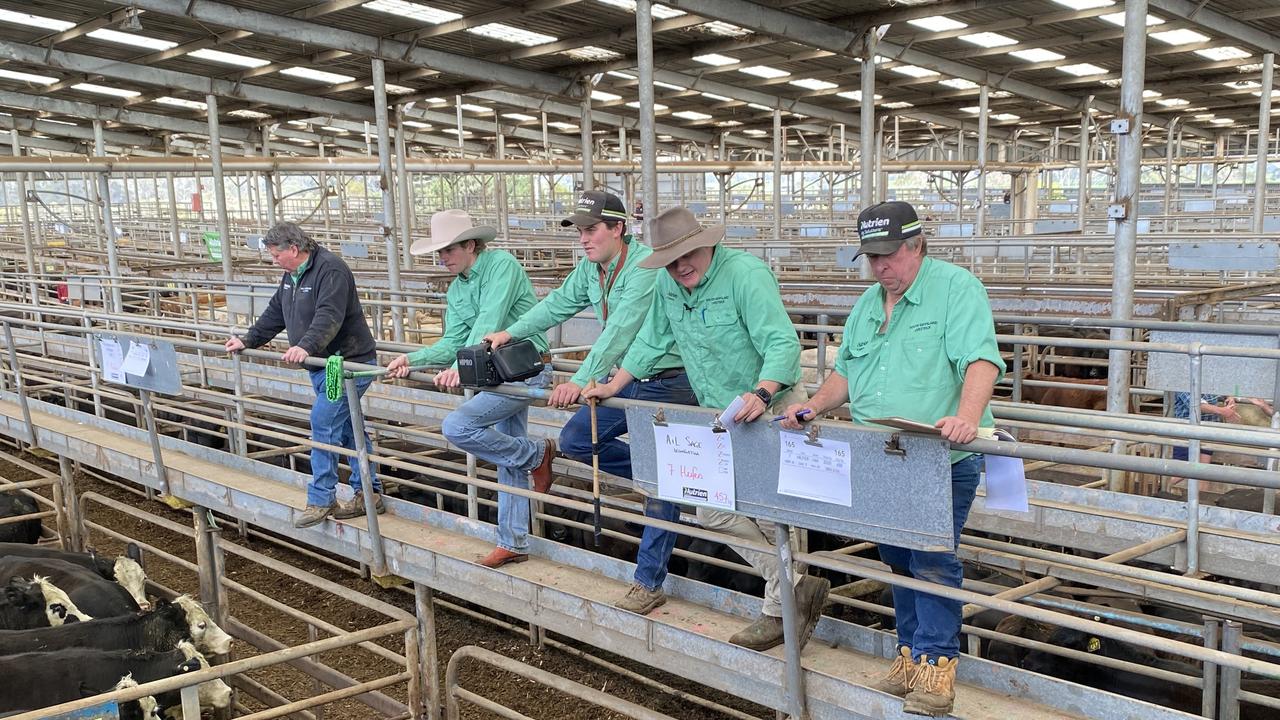Why a lack of figures have been holding back progress in Merinos
Almost two decades after they were first available, breeding values are starting to be used more widely in Merinos but there are some who are resisting.

Merino breeding figures are still a contentious issue almost two decades after they were first available to the industry.
But the numbers speak for themselves, with a 63 per cent growth in the number of Merino flocks offering sheep for sale with Estimated Breeding Values over the past decade.
For neXtgenAgri chief executive Mark Ferguson, who services the sheep industry both in Australia and New Zealand, figures are simply a tool that commercial breeders can use to improve their flocks.
Mr Ferguson spent many years in the show scene as a junior, preparing and judging animals, albeit with Angora goats. He said the experience gave him a passion for structure and type when breeding animals.
He then started a terminal sire stud before broadening his knowledge with university study and a PhD.
“The more we can understand – and I don’t ever pretend to understand everything – but the more information we have, the better we go with breeding,” Mr Ferguson said.
“It doesn’t mean you have to use that information (sheep breeding values) but what we have seen over the past decades is the more information you use, the more accurately you can select animals and the better we go.”
Mr Ferguson said producers had about 30 opportunities to make genetic decisions on their farms.
“There has been a lot of argy-bargy about breeding values and whether they are good or not so good,” he said. “And we see, depending on which camp you are in, people saying breeding values ruin structure, while those who don’t use them are criticised for not having productive sheep.
“It is not useful to be fighting or in different camps and there is room for both good sheep breeding principles and using data and incorporating that to move forward.”
Sheep Genetics senior development officer Emma McCrabb said there were now 400 flocks registered with MerinoSelect genetic evaluation.
Ms McCrabb said Australian Sheep Breeding Values were available for a range of production traits, including reproductive rate, growth, fleece and health characteristics.
“This allows better informed selection and purchasing decisions based on an animal’s genetic merit,” Ms McCrabb said.
Ms McCrabb said it was sensible to use breeding values rather than just relying on looks when buying rams.
“A ram’s physical appearance and performance is a function of both his environment and the genes he carries,” she said.
“Therefore, the way a ram presents on sale day is affected by environmental factors such as how he has been fed, his age, and whether he was born a twin or single.
“However, it is the genes of the animal, or his genetic merit, that will be passed on to the progeny that you are purchasing.
“ASBVs account for the environmental effects, like how the ram has been fed, so that producers can make a selection decision based on the estimate of the genes a ram will pass on to his offspring.”
There was also the ability to use ASBVs to solve some of the conundrums sheep breeders faced when trying to boost traits that were usually antagonistic.
“Seedstock breeders have shown that by measuring traits of interest, they can manage these correlations, and make gains in important traits simultaneously,” Ms McCrabb said.
“A good example is the way Merino breeders have been able to manage the antagonistic relationship between breech wrinkle and fleece weight to make gains in both traits.”
When it came to selecting rams to breed the next generation on the farm, Mr Ferguson said he followed the theory that “if you are going to feed a sheep, you might as well feed a good one”.
“The point of breeding values is to get information in the hands of buyers which is accurate enough to make good decisions rather than selecting rams without any information at all,” he said.
“Having numbers is best thing you can do, and commercial breeders can make some amazing rates of genetic gain by hunting the data and hunting the rams that suit their type and breeding objective.
“And my final message to get the most genetic gain from sires is look – look at the sheep, look at the figures and make a selection decision, but make sure you are not blinded by phenotype.”
BREAKOUT
Sheep Genetics provides tools to help commercial producers make selections as well as using ASBVs.
Ram team tracking: an option for producers using rams with ASBVs. It provides a genetic benchmark over time by averaging the ASBVs of the sire team each year. This provides an estimate of genetic progress and can assist in selection and purchasing decisions by providing an ASBV benchmark.
Flock Profiling: available to Merino producers and provides a genetic benchmark of where a flock sits compared to MerinoSelect, expressed as ASBVs. The results include average ASBVs for a suite of key Merino production and welfare traits, including fleece weight, growth and breech wrinkle. The test involves 20 randomly selected animals and the results are used to inform ram buying decisions.




